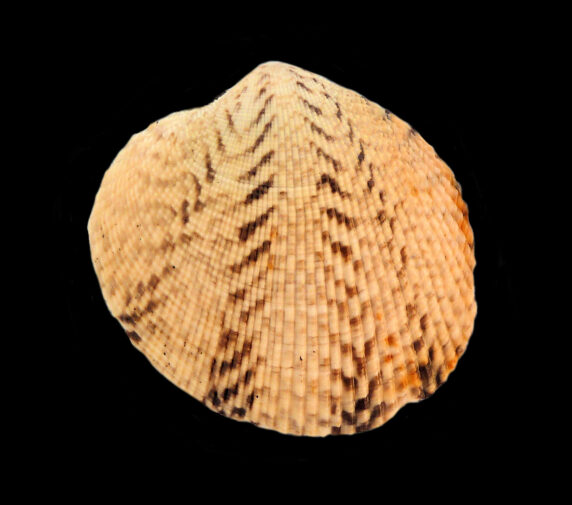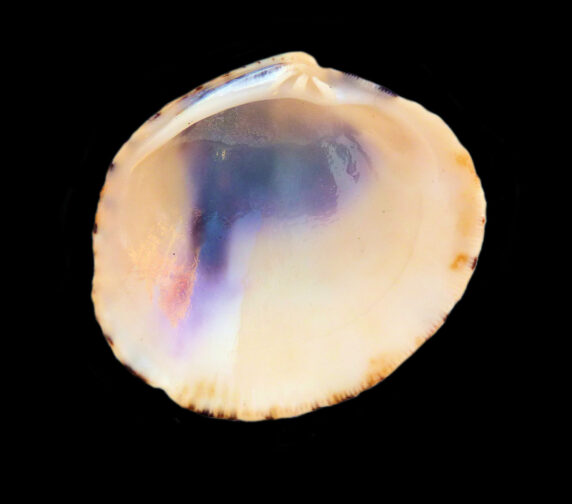Grate Clam Shell, Leukoma grata

 Grate Clam Shell, Leukoma grata. Shell collected off the beach of Bahía Concepción, Baja California Sur, October 2019. Size: 4.1 cm (1.6 inches) x 2.8 cm (1.1 inches). Collection, photograph and identification courtesy of Bob Hillis, Ivins, Utah.
Grate Clam Shell, Leukoma grata. Shell collected off the beach of Bahía Concepción, Baja California Sur, October 2019. Size: 4.1 cm (1.6 inches) x 2.8 cm (1.1 inches). Collection, photograph and identification courtesy of Bob Hillis, Ivins, Utah.
The Grate Clam, Leukoma grata (Say, 1831), is a bivalve mollusk that is a member of the Veneridae Family of Venus Clams. They are also known as the Grid Clam, Lesser Littleneck and the Multi-colored Clam and in Mexico as the taca menor. The shell is oval to circular in profile that are thick and somewhat inflated with a fairly pronounced beak with small cardinal teeth. The exterior of the shell is sculpted with radial lines and finer concentric lines. These lines give rise to the common name for this clam of “grate” or “grid.” This clam is highly variable in coloration and even two valves from the same shell may differ. The exterior color is gray to cream, with a variety of brown or black lines, specks, blotches, or chevrons possible; the interior is white to purple, sometimes, with orange or brown blotches. The Grate Clam shells reach 5.3 cm (2.1 inches) in length and 5.0 cm (2.0 inches) in height.
Grate Clams are found within mud and muddy sand substrate intertidally to depths of 390 m (1,280 feet). They range from Magdalena Bay, Baja California Sur to the central mainland Mexico Coast. They are found throughout the Sea of Cortez.
Synonyms include Protothaca grata, Venus discors, Venus fuscolineata, Venus grata, and Venus tricolor.